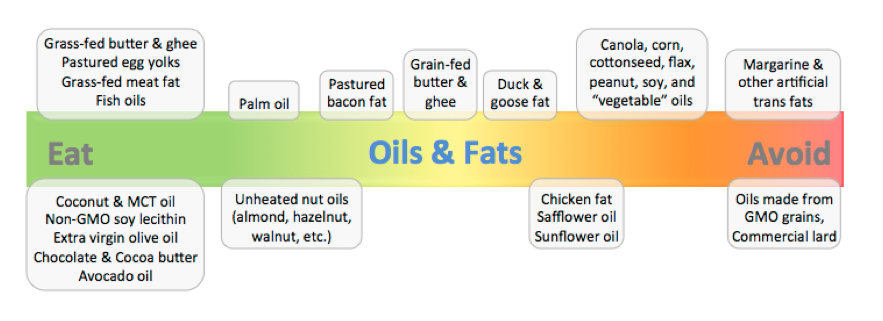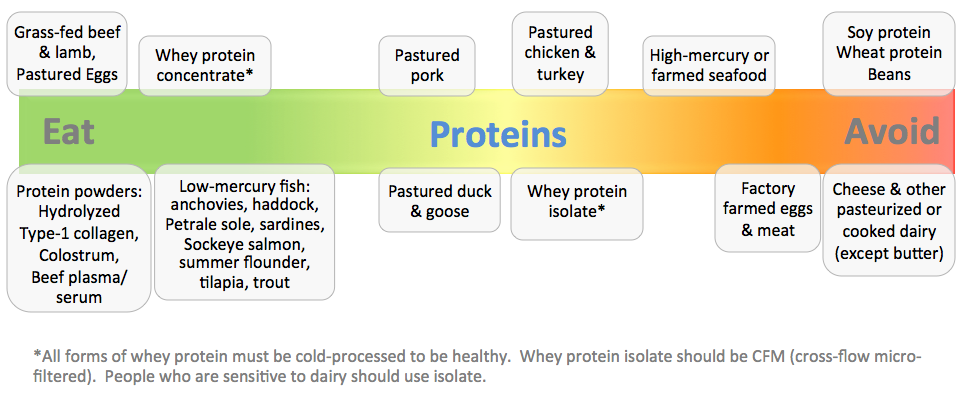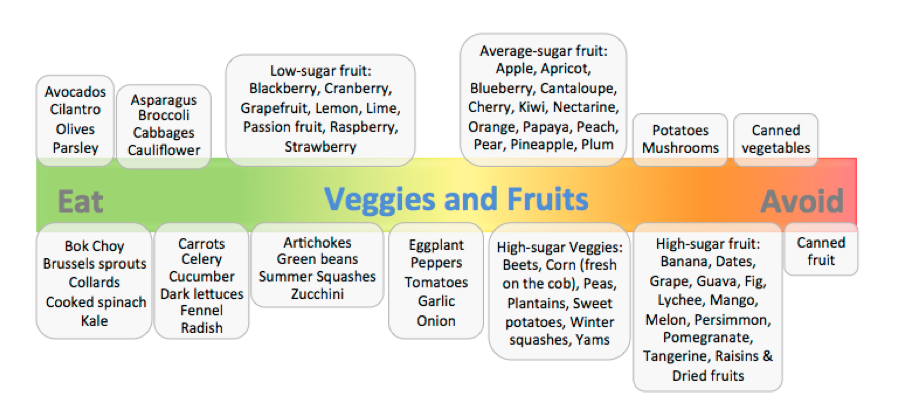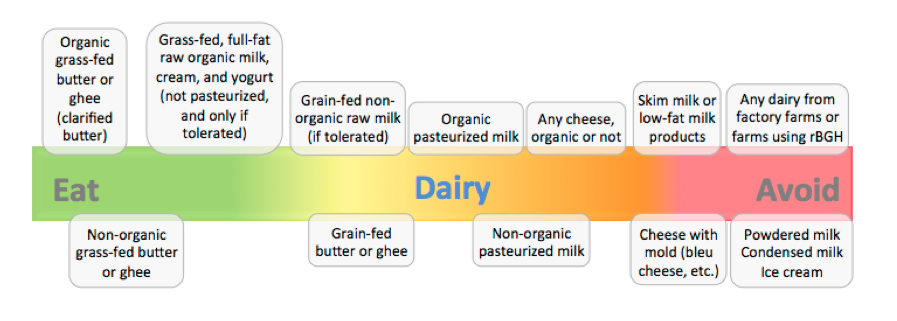
I got quoted http://www.washingtonpost.com/business/china-rejects-google-allegation-of-mas… this morning in the Washington Post about the most recent hacking of Google users, but my eye was drawn to a much worse abomination printed next to my quote: the new USDA dietary recommendations, obviously designed to prioritize agricultural economics over human health.
In fact, that’s not strong enough language. Words like negligence, ignorance, or just plain evil come to mind, and after completing 40 years of Zen meditation in 7 days, and being a practicing Heart Math executive coach, I’m not usually drawn to that line of thinking. But this really is that bad. After spending more than 10 years perfecting the Bulletproof Diet and modifying it for fertility and pregnancy health in “The Better Baby Book,” I was able to show it in one (long) screen, with enough detail to be useful.
Here’s why the USDA deserves to be treated as the tool of industry it is rather than the protector of the public good it professes to be:
You could look at this plate and assume that you can eat zero grams of fat – skim milk, broccoli, a pile of wheat, and some soybeans, with a banana on the side. I see puffy, bleary-eyed execs and hyperactive children eat this kind of diet all the time, maybe with a guilty pat of “I Can’t Believe It’s Not Butter” on the side. It’s a sure recipe for obesity, diabetes, yeast infections, and poor mental performance – not to mention blood sugar swings.
It will break your thyroid.
It will shorten your life.
Don’t believe me? Read Good Calories, Bad Calories by Taubes, who is a personal friend, as well as the author of the most important nutrition book in the last 50 years.
If the USDA had bothered to mention fat, they would have needed to differentiate between the various kinds of fats rather than treating margarine, hydrogenated soybean oil, flax seed, butter, coconut oil, chicken fat, and even candle wax as identical substances, and assuming they all have identical biological effects.
But by not even mentioning this vital nutrient – you know, the one that is the building block for all your hormones, your cell membranes, and your brain – the USDA has further spread the lie that all fat is bad for you. Oxidized fat is bad for you. Omega-6 oils are bad for you (soy, corn, and other vegetable & seed oils). You die slowly without the right amounts of the other ones.
Any proper biochemist (as opposed to most bureaucrats) can tell you loads about the biological effects of fats in the body, and how each plays a different role. Our research for the Better Baby Book led us to carefully select the types of fats we ate to lower pregnancy risks and increase the health and intelligence of our kids. It’s nearly the same diet we use for executive performance and resiliency at all ages, called the Bulletproof Diet.
If we’d been swayed by this comic-book “nutrition” recommendation, we’d have probably eaten a low fat diet, which results in a less healthy, more stressed, lower birth weight baby, along with a mother who has a better chance of running into health problems during pregnancy. We’d also have a father who was too tired to take care of his pregnant wife and new baby, much less keep earning a decent income.
Know your fats. Choose wisely. Here’s how:
Protein is not Protein
Soy protein and egg protein have radically different effects on the body. Black widow spider venom is also a protein with even a different effect. Treating them all the same is not logical or safe.
Soy protein is proven to break your thyroid gland, it inhibits absorbtion of minerals because of its phytate content, and it contains enough estrogen in it to affect testicle size and age of puberty in kids who eat it regularly.
70% of the world is allergic to gluten, the main protein in wheat and related grains. It destroys the gut, is linked to autism, and it makes you fat.
But according to the comic ChooseMyPlate.gov recommendations, you can put a loaf of seitan (wheat) tofurkey (soy) on your plate, and smile while you eat it, not knowing that you’re wrecking at least 3 vital control systems in your body as you do it, and probably getting a good dose of excitory neurotoxins from the wheat if you’re lucky. If you’re doing that to you kids, now is the time to stop.
Know your proteins. Choose wisely.
Fruit is just watery candy
High fructose corn syrup is not the same as broccoli, even though both are made of carbs. If someone says “eat carbs” the only logical response is, “Which ones?” So give the USDA credit for knowing that broccoli is not the same as grapes, even though they are both green sometimes.
But why in the world would you recommend that 25% of a plate be covered by a high-sugar dessert like fruit, which is also highest in the type of sugar (fructose) responsible for fatty liver, elevated triglycerides, and premature aging of your skin by a process called glycosylation, which is the same process that browns onions in a hot pan? Yum.
The argument is that fruit has antioxidants, “nutrients” and fiber. Whatever. Most fruit isn’t very high in fiber, and there are real questions about how much fiber is the right amount. The truth is that vegetables have the same types of trace nutrients as fruit, without the downside of high sugar. There is no excuse for telling people to eat a lot of sugary fruit. It makes them fat. Eat a little for pleasure if you want, but don’t pretend it’s for your health. That’s dishonest.
Vegetables are not vegetables
Some vegetables can be good for you. Unfortunately, the USDA thinks ketchup is a vegetable – really. So is a potato, and an eggplant, and a carrot, and cabbage. The differences between these vegies on your health couldn’t be larger. Potatoes and eggplants are full of lectins, irritating proteins which cause about 20% of the cases of arthritis today. Oops. And carrots are full of sugar, which makes them more like fruit than vegetables. The list goes on and on, but some vegies are better for you than others, and some should be eaten very regularly.
Here’s how to think about fruit and vegetables:
Grains cause pains
Grain is not food for people. It’s caused multi-generational weaknesses in humans, it makes them shorter, dumber, fatter, and it contributes to flattening spines and crowded teeth when mothers eat it. Part of the problem comes from the proteins in grains that are there to fight off insects and prevent germination, and much of it comes from the trace molds that grow on them, introducing cancer and heart-disease-causing toxins to foods.
Societies eat grains because they’re cheap and easy to grow and they can store well, or sometimes because their hunters were genetically bad at hunting. History has shown us that grains are not good for people, except the people who are selling grains to unsuspecting victims, while applying nutritious-sounding brands to them.
For the 70% of people who don’t digest wheat well, there is an added bonus: gluteomorphin. That’s a substance with morphine or opiate like qualities that forms in the gut when you eat wheat. It is active in the brain on opiate receptors. Feel like you really want another piece of wheat bread? You do – you’re addicted. Seriously. Try to go a week with NO wheat in your diet anywhere. The cravings you’ll feel are that bad for a reason, but you’ll feel so much better if you do it that it’s worth the pain.
Dairy is not dairy
That round glass in the corner of the USDA ChooseMyPlate.com recommendation is meant to be a glass of milk. The same milk that is causing girls to get bigger breasts because of the hormones added to the cows – the same hormones that cause the udders of the cows to swell. If cows had centerfold magazines, American rBGH-treated cows would be in the centerfolds.
Milk protein is inflammatory when it’s cooked or pasteurized. Cheese stores most of the toxins from the feed the cows ate. Milk is a common allergen. Casein, the protein in milk, breaks down into caseomorphin in many people, another addictive opiate like substance. Drinking milk is one of the easiest ways to get fat quickly – ask any weightlifter desperate to gain weight.
But milkfat – especially from grass-fed cows – works even better than coconut oil to make your brain work better and to make you lean and strong, with denser bones. (yes, all this is referenced in our upcoming book!)
I’m guessing that Blue Diamond didn’t pay its USDA-lobbying bills on time, because nuts got cut out of the plate alltogether. That’s ok though, they have a lot of omega 6 inflammatory oils and toxins from mold anyway.
We could go on and on, but the damage is done: newspapers and well-meaning but misinformed physicians will read the headlines of this government-driven farce, and continue to recommend a harmful low-fat diet to even their most vulnerable patients.
So pass the butter, coconut oil, and healthy red meat. The accountants and policymakers who created this awful plan can have all the margarine, soy protein and wheat. After all, they think it’s all the same.
Shame, shame, shame.
The complete Bulletproof Executive Diet is available at www.bulletproofexec.com and the Better Baby plan is available at www.betterbabybook.com.















